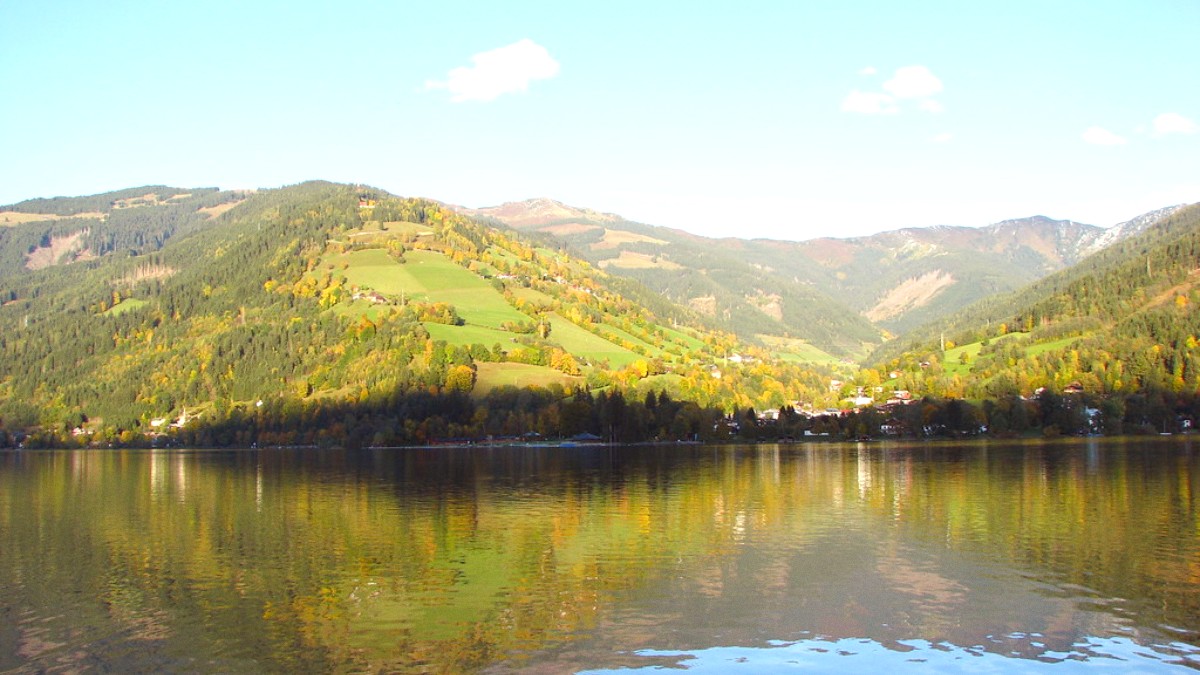
Austria
Traditional Austrian cuisine, especially in mountainous regions like Zell am See, arose from the need for hearty sustenance.
Dishes are often filling, supplying energy for physical activity or warmth during cold winters. The cuisine mirrors a story of self-sufficiency.
Pork and beef in schnitzels, roasts. Potatoes are versatile, used in salads and dumplings. Cabbage is another common vegetable.
Dumplings (Knödel) come in savory and sweet forms. Carrots, parsnips, and celery root add depth.
Parsley and chives often garnish. Apples, plums, berries for desserts. Cream and butter for richness.
Thinly pounded, breaded, and pan-fried cutlet, traditionally veal. Served with lemon, potato salad or cranberry sauce.
Found on menus of almost all traditional Austrian restaurants.
Fluffy, shredded, caramelized pancake with fruit compote or powdered sugar. A popular dessert or snack.
Its name translates to "Emperor's Mess."
Classic apple strudel with sweet apple, cinnamon, and raisins in flaky dough. Often warm with vanilla ice cream or sauce.
Seek it in cafes and dessert menus.
Märzen (lager beer), Radler (beer & lemonade), Schnapps (fruit brandy). Almdudler (herbal lemonade). Coffee specialties: Melange, Einspänner, Verlängerter.
Sachertorte (chocolate cake), Linzer Torte (fruit tart), Krapfen (Austrian doughnut).
Upscale restaurants, often in 4- and 5-star hotels, with modern Austrian and international gourmet touches.
Abundant in town center. Diverse menus including Austrian, Italian (pizza/pasta), and international options.
Würstelstands for quick, inexpensive sausages. Bakeries for fresh bread and sandwiches.
Italian restaurants (pizza and pasta) are common and very popular. A few Asian restaurants exist.
Diverse European cuisine options.
Local markets (especially Saturdays) for fresh produce and regional specialties.
No large, dedicated food halls here.
5-10% for good service.
Most restaurants close by midnight.
Reservations advised for busy periods.
Supermarkets for self-catering.
Awareness of gluten-free needs is growing. Inform staff clearly about allergies.
Some restaurants may adapt dishes or have specific options.
Carrying a Translation card with dietary restrictions in German is highly recommended.
Online search or apps like HappyCow can help locate suitable restaurants.
Many menus show allergens. Inquire with staff if uncertain about ingredients.
Larger hotels and fine dining establishments might be more flexible with special requests.
Look for "Ab Hof Verkauf" signs on country roads.
Dining at Almhütten on mountainsides is authentic. They serve hearty meals like Käsespätzle and Kaiserschmarrn.
Local village festivals (Dorffeste) and Christmas markets (Adventmärkte) offer traditional food and drink stalls.
Some local producers or guesthouses may offer schnapps tastings.
Explore local distilleries for a direct experience.
Informal baking experiences might be available at some guesthouses, specifically in rural areas.
Learn to make traditional Austrian pastries.
The cuisine focuses on comforting, filling dishes that reflect the alpine environment.
Enjoy meals with breathtaking views, from lakefront to mountain huts.
Experience special foods tied to local festivals and winter markets.
Embrace the flavors of Zell am See to complete your alpine adventure.